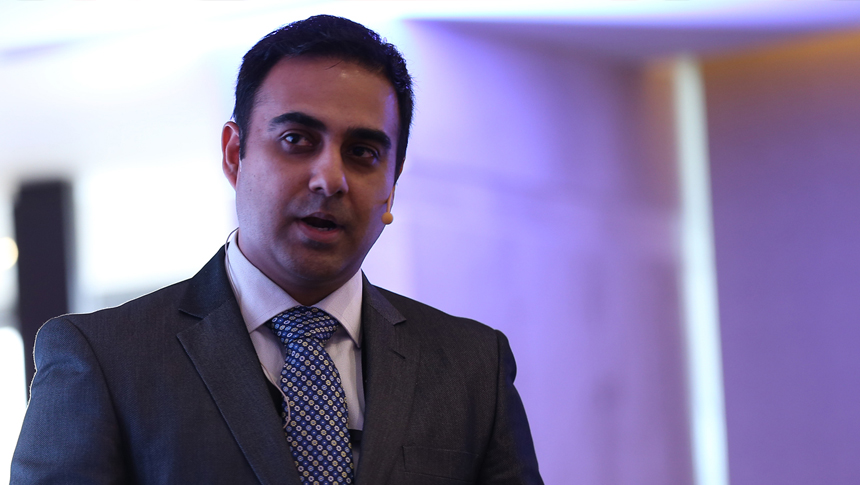The shiny new toy needs an industry ombudsman to detect AdFraud & more.
As media trading has become increasingly complex over the past 15 years, driven by the advent and then the explosion of digital marketing, the need for someone — anyone — to say the same things again and again and keep the spotlight shining on transparency has only grown stronger. Each new link in the chain has added complexity to the trading model; each innovation has reinforced the need for further pressure to deliver transparency and accountability.
Digital grew to have a lack of transparency built into it for the same reasons Out Of Home had decades before. Unlike traditional mass media (TV and press), digital had no rules or traditions. So, when the adtech and martech industries added complexity to digital media trading through Agency Trading Desks, ad servers, Demand-side Platforms and Supply-side Platforms; when digital skyrocketed to become — for many advertisers — the biggest single line of A&P expenditure, it grew too quickly and with insufficient checks and balances. To this day, repeated research shows that digital performs very poorly in terms of ROI compared to traditional media channels — particularly the ace in the pack, TV. And yet it continues to enjoy a meteoric rise up clients’ spending ladder, unabated.
Digital grew to have a lack of transparency built into it for the same reasons Out Of Home had decades before. Unlike traditional mass media (TV and press), digital had no rules or traditions.
We always have to ask “Why?”
In our experience as leading media-auditors engaged with over 170advertisers, the concerns around digital are very different from those around TV. Objective-setting, compliance, performance audit and fraud-detection take priority over costs. With India now the 6th largest media market in the world, all these issues are paramount for advertisers to consider. From some of the recent work in India on media transparency & compliance by our partners and global compliance specialists: Firm Decisions; it was found that there is perhaps more trust given here by advertisers to their agencies than in some other markets, and trust should be accompanied by responsibility. Digital growth in particular in India, is beginning to catch up with many other countries and so advertisers have a great opportunity to get ahead by incorporating learnings from other markets.
In the context of transparency in digital, Ad fraud is particularly important for marketers to understand. If you don’t detect and avoid fraud, it will poison all other areas of optimization: context (brand safety), viewability and performance. After all, context and viewability are irrelevant if human eyes do not see the ads.
Marketers are being subjected to Tricks & Tactics on several counts, am sharing below some red flags that one should look out for. And ways to deal with them.
TRICKS
- Zero Performance
- High CTRs
- IP Address
- Site Behaviour
Zero performance
If 150 clicks from LinkedIn produce 20 conversions, while 100 clicks from your display campaigns produce no conversions, it could be an adfraud trick. Compare the performance of your display ad campaigns to other channels like Facebook, Twitter or LinkedIn.
Extremely High CTRs
If you notice certain placements deliver CTRs higher than 1 percent, or even higher than 0.3 percent, it becomes important to investigate whether those clicks are exhibiting other warning signs: no performance, high bounce rates and short session durations to confirm your suspicions.
Data center IP addresses
This is the easiest audit to conduct. If the “visitor” to your page is originating from a hosted server, not a residential or corporate computer, it is clearly adfraud and all you need to do is produce proof. This will get you a refund from your agency or ad-buying platform.
Site behaviour
On some DSPs, like The Trade Desk, a countless number of sites are bucketed into a line item called “tail aggregate,” which covers the smallest of the long-tail sites. It’s wise to audit your site-level reporting and see if you notice any unrecognizable sites on that list. And last but not the least, all things being equal, if the same ads and landing page from one channel show signs of real human behavior — filling out forms, spending time on the page, clicking through to other pages on the site — while another channel shows the complete opposite, you are looking at a red flag.
From Tricks of the Trade to Partner Tactics
Let’s understand that no service provider wants to admit to buying fraudulent ad inventory on your behalf. So to save face, and avoid refund requests, we have seen Tactics that at times are amusing and at most times shocking.
In the context of transparency in digital, Ad fraud is particularly important for marketers to understand. If you don’t detect and avoid fraud, it will poison all other areas of optimization: context (brand safety), viewability and performance. After all, context and viewability are irrelevant if human eyes do not see the ads
TACTICS
- “Let’s look at viewability”
- “Here’s evidence of no-fraud: browsers, operating systems, location, etc. etc”
- “We’ve submitted your ad to Google for additional ad review”
- “We will provide Invalid Traffic [IVT] or NonHuman Traffic [NHT] metrics…”
Viewability
Something that’s 100% viewable need not necessarily be seen by the human eye, and hence it can just be a deflecting tactic from getting a true picture regarding ad fraud.
Spreadsheet evidence
Massive spreadsheets received by advertisers from their service providers list browsers, operating systems, which do not really show anything except the fact that they are not dealing with an easily detectable ad fraud (same IP address or operating systems).
Buzzword salvo
It can be overwhelming when acronyms to ad fraud solutions are thrown at an express speed. It’s necessary to audit your campaigns in a transparent manner in order to get to the bottom of the issue yourself. Trust, but always verify.
Ad fraud detection metrics
Service providers send various metrics that detect ad fraud and prove its absence, but we should be well aware that they might have vulnerabilities of their own which questions their accuracy. Ad fraud detection companies automate most of the manual work of checking ad campaigns for fraud. Using these tools is not a remedy for fraud. The tools might end up as props that some service providers might use to signal diligence or to defer accountability.
Ad fraud is obviously a massive problem for marketers in the current scenario but another rising devil to lock horns with is management of programmatic buying. Very recently, a detailed report titled Seeing Through The Financial Fog was released by Ebiquity’s Chief Strategy Officer Nick Manning. The report was the culmination of 2 years of effort and analysis of 16.4billion impressions.Broad highlights of this research around Programmatic:
• There’s a widespread use of non-disclosed programmatic buying compounded by a lack of knowledge about the programmatic eco system.
• Managing Programmatic investments might be more difficult than traditional investments, which can bear substantial economic consequences for advertisers.
• There is a lack of industry standards & protocols to analyse costs and effectiveness of programmatic investments.
• The report recommended a rigorous level of financial reporting and audit protocols. The media buying agreement should allow for cost and performance transparency combined with accountability. The contract rights should encompass access to the demand side supply chain, including all subsidiaries, divisions, and affiliates of the advertiser’s agency.
“Naturally, marketers seek to exploit new channels and opportunities as they drive for innovation in communication and competitive advantage. However the unswerving chase of the ‘shiny new toy’ should not happen at any cost…”
Not to kill the enthusiasm around digital, but to tame the wild horse is what we do best and is what marketers should define as the need of the hour. This is aptly captured by the leading global marketing compliance specialist Alan Rutherford (Chairman of Firm Decisions): “Naturally, marketers seek to exploit new channels and opportunities as they drive for innovation in communication and competitive advantage. However the unswerving chase of the ‘shiny new toy’ should not happen at any cost.
Advertisers need to continue to ask the right questions of their agency as to why the agency is recommending certain strategies, deployments, and tactics. And that should be followed up with rigorous analysis of results, costs, and returns.”

